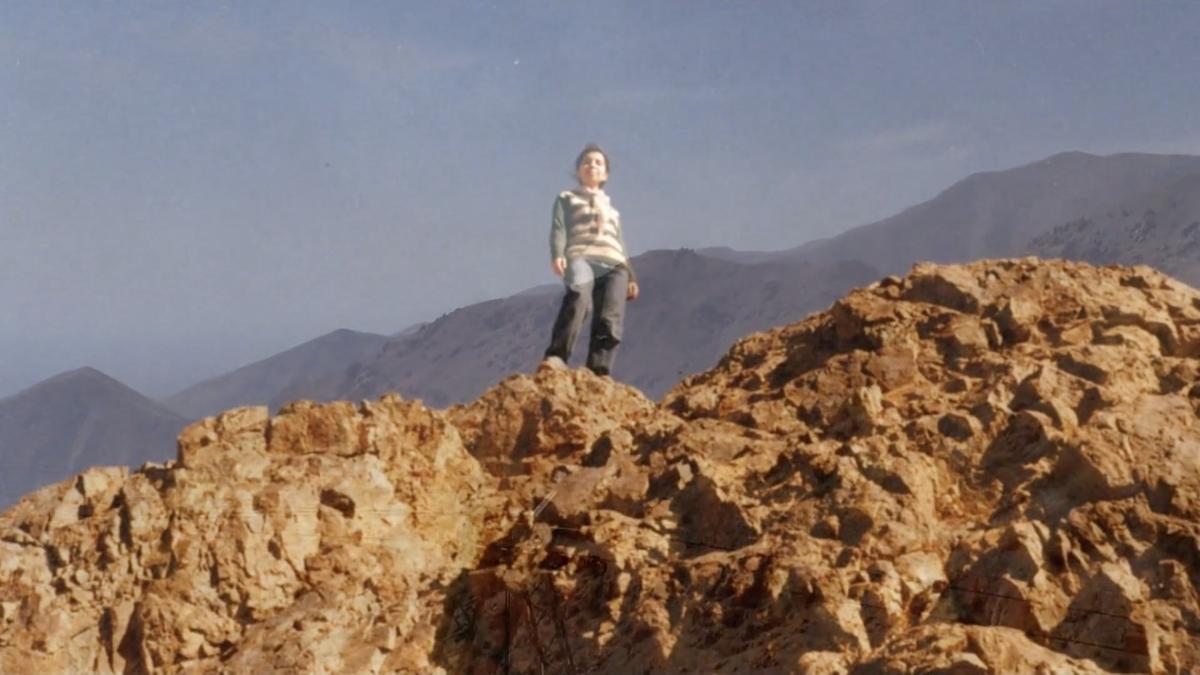In this podcast, artist Selina Ershadi discusses three films: Hollywood Ave (2017), Amator (2019) and The hands also look (2020), alongside a new work in progress, The Blue Dome (forthcoming). In conversation with artist Dani McIntosh, Selina reflects on navigating personal and family histories as guided by Chantal Akerman, Maya Deren and Derek Jarman; ideas of dwelling, homemaking and displacement; oral storytelling traditions and the poetic potential of decentering the visual.
List of topics
0:00: Introduction from Dani McIntosh.
01:55: Dani asks about the inspiration behind Hollywood Ave (2017).
02:00: Selina discusses working with family archives, and the tension between intimacy and the withholding of personal material; looking at the work of Chantal Akerman and how to navigate personal material.
04:00: Theme of the archway in her mother's house; the idea of recreation and artifice within the frame; and playing with a straight documentary form that claims to represent truth through re-staging.
06:00: Dani: How does the film play with a sense of time?
07:00: Working at a mediative pace. The idea of dwelling—how do we make homes, inhabit homes? Concept of unhomeliness or the uncanny; the attempt at homemaking but also the impossibility of it.
08:00: Dani introduces Amator (2019).
09:30: Selina discusses starting from a place of unknowns but with some co-ordinates—a text conversation between Selena and her aunt and a photo of her mother on a mountain range in Tehran.
11:15: On collaboration with her mother, in which Selina gave her a handicam and directions for what to shoot—"take long static shots"; she discusses the resulting footage and Chantal Akerman’s comment on "using the shots that normally end up in the trashcan of cinema." Title of Amator is taken from an essay by Maya Deren.
14: Dani asks, how did voiceover narrative get written?
15: Selina on "a constructed diaristic voiceover" and "allowing my mother to tell her own story," albeit with prompts.
15:30: Dani asks about the inclusion of poetry by Forough Farrokhzad, and the banning of her work in Iran.
16:30: Selina discusses Forough Farrokhzad’s poetry and film, and her work as part of a genealogy of artistic practice.
19:30: Dani introduces Selina's film The hands also look (2020).
20:45: Dani asks, why have you withdrawn the image in this work?
21: Selina discusses the period leading up to making the film as one of creative block, personal loss and questioning the dominance of the visual in culture.
22:20: Influence of Derek Jarman’s film Blue (1993); the sonic realm as a cinematic space; "subverting the notion of what an image is" and "dwelling in the void space" and the potential this holds.
24:30: On the conceptual links between The hands also look and Selina's previous works.
25:30: Dani asks about "the potential of the void." She describes the absence of an image as transporting her back to a childlike space, and asks about Selina's intention.
26:30: Selina discusses the use of the phase "yeki bood, yeki nabood" ("one was, one was not") in Persian folktales; and the idea of presence and absence in stories.
28:30: The film as creating a place "to dream... to restore their nervous systems"; the effects of sound on the body, oral storytelling traditions, the collection of Middle Eastern folktales entitled 1001 nights, which Jarman was also interested in.
31:30: Idea of decentering vision; a narrator in a perpetual state of enquiry, “not necessarily seek(ing) solid answers but guide them through unfolding of questions.”
32:45: They discuss the structuring device in the film of 'coffee readings' and the images appearing to her mother.
33:30: Dani asks about the poetic device of the fugue: "Whose voices are in The hands also look?"
34:20: Selina discusses the etymology of the word ‘fugue’.
35:30: On the idea of haunting; holding other films in mind during the production process, namely Laurie Anderson’s Heart of a Dog (2015), and Anderson’s idea that in stories some perspectives are erased.
37:30: Discusses future work and the relationship between moving image and music.
38: Dani asks about a work in development, The Blue Dome (2023); Selina discusses the relationship of this new work to her previous body of films.
40: Dani asks about the relationship between Selina’s work and poetry.
40:30: Selina discusses using poetic devices, resisting closure—"it’s ultimately about trying to create a feeling over any kind of exposition, any kind of answer."
42:35: End.

-circuit.jpg)
,-part-of-the-wastelands-(2024).-installation-view,-auckland-art-gallery-toi-o-tamaki,-2025.-image-courtesy-of-the-artist.jpg)